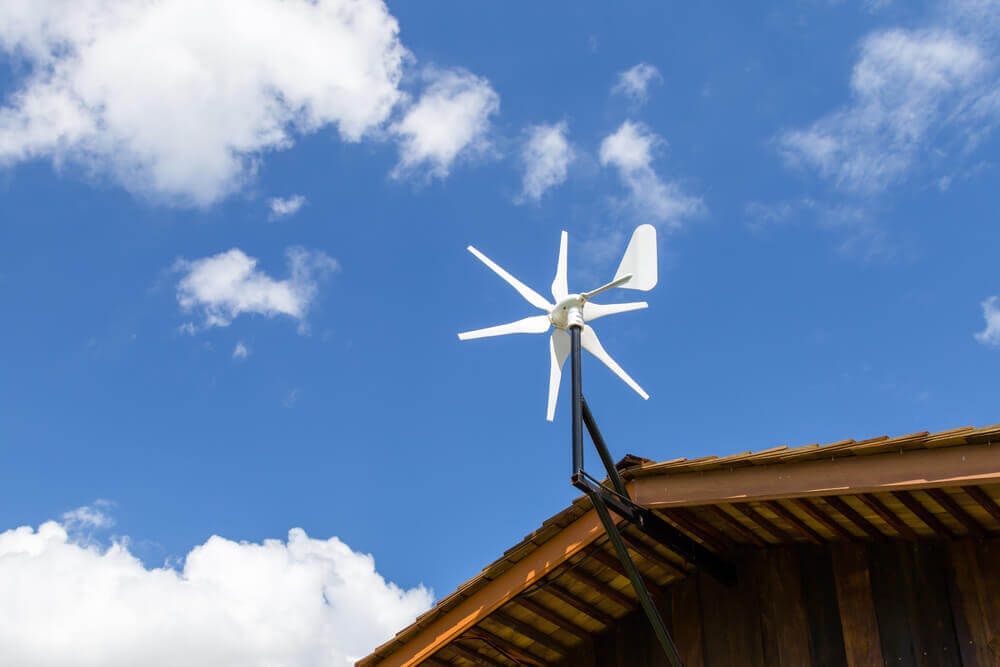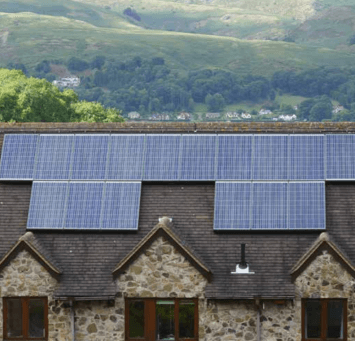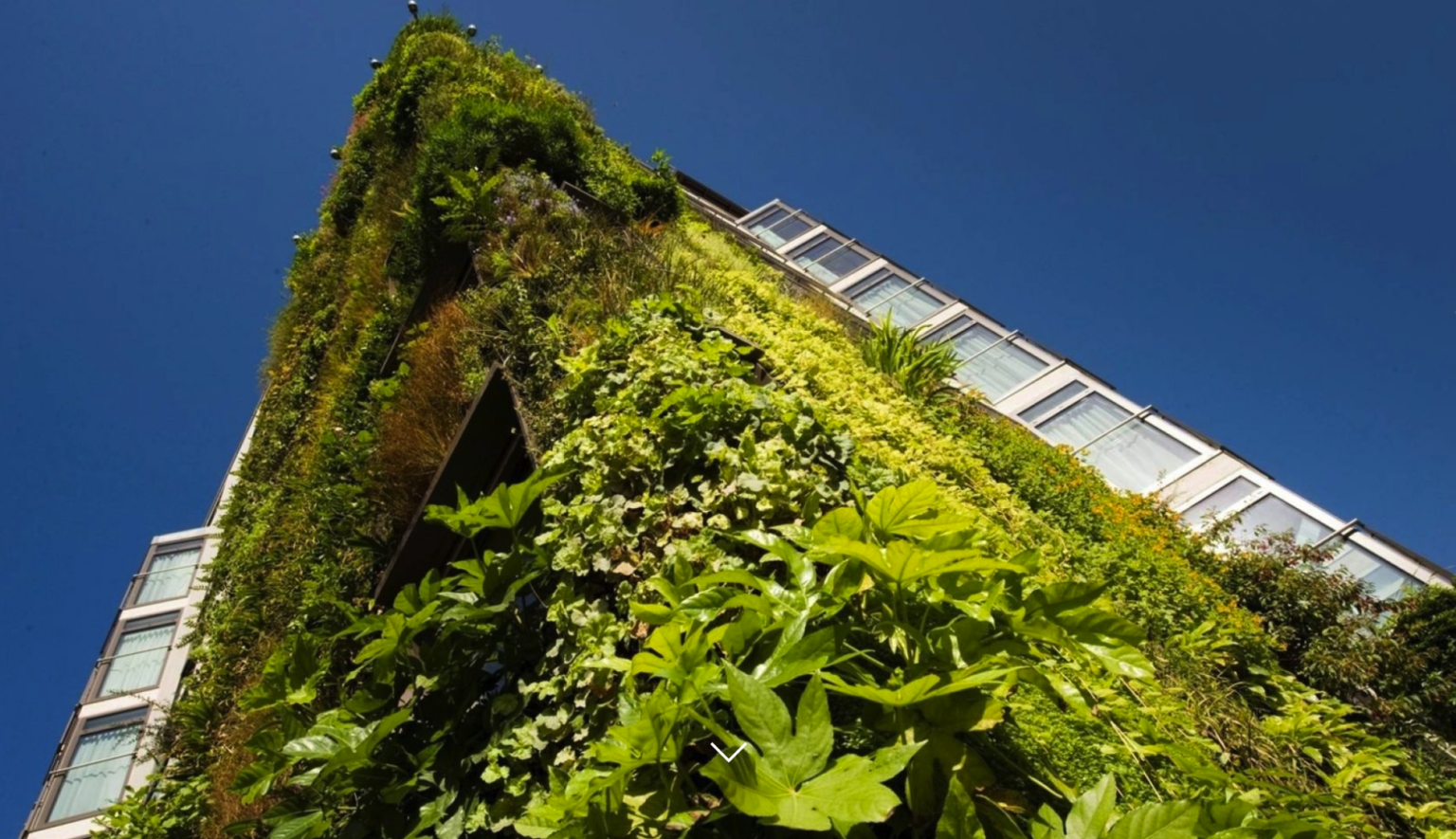The RedBook Guide: How to incorporate Green Energy to your home
How can I make my home environmentally friendly or ‘green’?
This question is asked more and more often by clients who want to build new houses, believing—as we do at RedBook—this is as important as their choices about the new house’s style or size.
Just as often, those buying an old house and refurbishing it want to swap from old-fashioned oil or gas-fired heating systems to sustainable energy solutions as soon as they can.
Some clients want to go further still and extend environmental enhancements to their gardens or to the re-wilding of their land.
We advise in every case that there is a huge amount they can do to boost the eco-friendliness of their homes. Just how much they do will be determined by the amount they wish to invest in materials, technology and equipment. And exactly what they do needs to be based on getting the best possible technical advice from a trusted source. This is a complex, fast-changing area so up-to-the-minute advice is essential.
With environmental issues growing in importance politically, and set to affect property owners more and more in years to come legally, this short guide will provide some timely pointers and questions to ask. A second Green Guide will follow in our next newsletter: the subject is too big to fit into a single bite.
(Sandy Mitchell, RedBook’s founder, was the environment editor of a well-known national magazine in one of his first jobs 20 years ago, so has always had a keen professional interest in this area. He has recently installed air-source heat pumps at his own 13th-century Grade II-listed country house.)
The Good Life for all: every home, new or old, can be made more environmentally friendly.
Where to start
Ways to think about improving a house’s environmental impact are usefully divided into distinct areas, ranked here in the order that our clients tend to put them:
- Energy use
- Design
- Planning
- Building materials and methods
- Future proofing
- Waste and recycling
So, in this Guide, we start with energy use.
It takes energy—building a new house
Nowadays every newly built house—or a property converted to residential use—has to meet strictly assessed ‘energy performance’ criteria by law.
As a result, new houses need far less energy to heat them than houses built, say, 20 years ago, because new ones are incomparably better insulated and sealed from chilly draughts. In fact, new houses can be so well sealed they can even be uncomfortably airless to live in.
But growing numbers of people want to go well beyond the minimum legal standard and to minimise the impact on the planet of the energy needed to heat and power their home. Choosing the right source of green energy is key.
Top tip
- There are stringent, and increasingly popular, standards for rating the energy performance and ecological footprint of new houses (such as the German ‘Passivhaus’ standard, which can result in a house that uses less than 20% of the energy needed to heat and cool even a newly built house). Do discuss these standards with your architect at your first exploratory meeting.
- Architects who build traditional houses in classical styles are often as forward thinking and technologically innovative when it comes to designing ‘green buildings’ as contemporary architects. So there is no need to imagine you can only build a modern-looking house if you want it to be environmentally friendly.
- The Government offers homeowners significant financial incentives to make their properties more energy efficient and install renewable energy sources. See the Green Homes scheme, and the Domestic Renewable Incentive Heat scheme.
How soon will I get my money back?
When choosing which green energy source is best for your home, you will want to compare the costs of different options and in particular look at how long it will take before the cost of buying and installing the new equipment will be paid back to you from the savings you make on energy bills. This is known as the ‘payback period’.
The cheaper the new equipment—an air-source heat pump, for example—and the more expensive the energy source you are currently using or comparing it with, the quicker you get your money back.
In the simplest terms, it is likely be quicker to get your money back if you are replacing an oil-based or electric system than a gas one because oil and electricity are more expensive sources of power than gas.

‘When will I get my money back?’
Top tip
- To work out the payback period on any equipment you are considering having installed, you will find the manufacturer usually provides figures. But like the mileage figures promised by car makers for their latest model, you need to treat the data with caution. So a specialist green energy consultant or services engineer can be employed to make the calculations for you, and to advise on the best type of energy source for your property. For the large projects that RedBook typically advises clients on, we recommend the ideal energy consultant.
- When you are thinking about whether or not to invest in green energy, keep in mind that the Government has produced a ‘Clean Growth Strategy’ that will see the installation of fossil-fuel boilers banned in newly built houses from 2025. After this date, you will not be able to replace an existing oil or gas boiler with a new one.
Energy sources
There are many different kinds of alternative energy-source and all are far better for the planet than burning fossil fuel. The right one for your home can depend on numerous factors as wide ranging as the geographical location of your home, the type of heating system currently installed, and the amount of open space you have around your home.
To take an unusual example, one of RedBook’s clients bought a home on a remote hillside in a National Park, heated by old oil-fired generators. They wanted a greener and cheaper alternative. In the end a combination of wind power and a small hydroelectric turbine, driven by a small stream close by, proved the ideal solution.

A sunny solution for reducing your home’s carbon footprint
Here are the most commonly used green energy sources and their pros and cons.
Air Source
This is used to provide hot water and heating for homes, or for swimming pools.
There are countless different brands, sizes and types of air-to-water heat pumps on the market. The dimensions of the unit, its cost, heat output, noise, and the extent of the area around a unit required as clear space, all need to be considered when choosing the right one.
Plus
- Air-source units can be neat and small
- The cost of equipment has come down greatly in the last few years
- They produce heat at low cost
Minus
- The fans used in air-source heat pumps can be noisy, especially in cold weather
- Planning consent or landlord’s consent may be required in townhouses, and may be refused
- When the outside air temperature falls in winter, the pumps quickly cease to be cost effective
Ground source
If you own land around your home, you can install a ground-to-water heat pump to produce hot water or to heat your home. You can also drill a borehole to achieve the same heating effect, or use a body of standing water such as a large pond or lake.
Plus
- Reliable and low maintenance
- More energy efficient than air-source heat pumps
- Popular with planning authorities as they are silent and have no visible impact
Minus
- The earthworks needed to scrape back acres of earth and bury the ground loop or ‘slinky’ coils through which water flows (and antifreeze) are disruptive and expensive. The larger the house, the greater the length of coil and ground area needed.
- Radiators won’t feel as hot to touch in winter as ones heated by electricity, gas or oil
- Three-phase (high voltage) power may be needed to supply the ground-source pump, and installing this power can be prohibitively expensive if long distances are involved
Solar Panels
Solar panels—also known as photovoltaic or PV panels—are a tried and tested source of green energy and are used widely in the UK though most panels are actually made in China. Some types of panels can heat water and produce electric power. These are known as ‘photovoltaic thermal’ panels. (We did caution that this is a complex area!)
Plus
- The efficiency of solar panels has increased greatly while costs have fallen steeply
- Panels can be fitted readily to many roof slopes or walls exposed to sun, or can be free standing
- Maintenance costs are low as there are no moving parts, unlike air-source heat pumps for instance
Minus
- British weather limits panels’ effectiveness at cold and dark times of year when energy is needed most in homes
- Planning consent can be required, and listed building consent is needed for fixing them to historic properties
- Panels can be ugly and, if free standing, take up large amounts of space
- Solar-panel technology is developing fast and today’s models may fairly quickly look outdated
- Expensive batteries are used to store energy produced by the panels during daytime so it can be used for hot water and light at nig
Biomass
Biomass is the catch-all term used to describe wood, wood pellets and organic material that burns well and produces heat or drives turbines to produce electricity.
Plus
- Carbon neutral as the wood burned only releases as much carbon as it absorbed while growing
- Burns at a high temperature, producing heat levels equal to oil or gas-burning boilers
- Can be ideal if you own or live close to woodland producing biomass for burning
Minus
- Wood pellets and woodchips are bulky so a barn or outbuilding is likely needed to store the fuel close to your house. Frequent lorry deliveries of wood-fuel can also be annoying.
- Biomass boilers are often much larger than domestic boilers so require more space
- Burning biomass produces other pollutants apart from carbon
Wind
Wind turbines can be seen all over Britain nowadays, usually in big arrays near the coast or reliably windy areas.
Plus
- Wind power combines well with other green energy sources to supply a house’s needs
- The price of turbines is falling and they are becoming steadily more efficient
- Wind power is a wholly free and ‘green’ energy source
Minus
- Impossible to hide given their size, so turbines are visually intrusive especially in sensitive landscapes
- Expensive to buy and install
- Their power output is unpredictable and fluctuates with the speed of the wind blowing on any day
- The blades of a turbine produce noise—a kind of ‘whoosh’—that can be loud and disturbing
To find out more about the ways you can incorporate green energy to your home have a look at these online resources:
- Find other green Government initiatives here.
- The Energy Saving Trust offers a guide to the best ways to get started in sustainability.
Listen:
- Radio 4’s The Bottom Line podcast hosted by Evan Davis episode on ‘Renewable Energy’ is a lively debate on the subject.
RedBook can source specialists to advise on all aspects of green energy and making your home eco-friendly. Do get in touch to find out more here.

